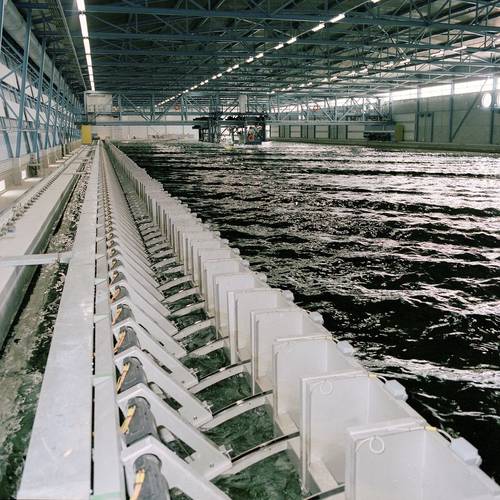Marin Uses Subsea Wireless Solution from WFS in Test Basin
WFS helps Marin communicate with underwater models in their test basin using subsea wireless technology.
Marin is one of the leading institutes in the world for hydrodynamic research and maritime technology, providing services to the shipbuilding and offshore industry and governments. Customers include commercial ship builders, fleet owners, naval architects, classification societies, oil and LNG companies and navies all over the world.
Marin’s Seakeeping and Maneuvering basin, based in Wageningen, the Netherlands, is one of seven model testing facilities used for testing scale models of both surface and underwater vehicles. The basin is a model test facility, measuring 170m x 40m x 5m, with wave makers and wave absorbers offering the capability to test a vehicle in uni- and multi-directional waves from various directions.
The purpose of tests in the basin is to quantify and demonstrate the behavior and performance of a vessel under particular conditions. Each vessel goes through an extensive series of tests and refinements to ensure that its physical characteristics are all optimized to produce the desired results.
Marin approached WFS with a requirement for a wireless data link to allow communications to and from (moving) underwater vessels in their Seakeeping and Maneuvering basin. The wireless data link would be used to control the vehicle in the tank at up to seven meters range, and also to retrieve data from the onboard instrumentation to optimize behavior and performance.
The solution was delivered using a broadband data link from the seatooth family of subsea wireless instruments from WFS, enabling a high rate of data to be transmitted over a short range, underwater. Seatooth can provide a reliable wireless communications link in the most challenging subsea environments:
• In shallow water or turbid water
• In the presence of bubbles or contaminants
• Near to large subsea structures
• Through ground, seabed, concrete and non-metallic structures
For testing of moving underwater vessels, a hard wired method of communication (and control) is not practical. Wires between a free sailing vessel and a monitoring system will also introduce extra drag which is both undesired in testing and will affect the accuracy of the test results. A wireless link like seatooth enables continuous monitoring for safety and efficiency and is preferable because it provides both continuous information and the opportunity to intervene on a real-time basis if required.
www.wfs-tech.com


![Microplastic beads seen in the central tube of a copepod [their intestinal tract], as evidenced here, fluorescently labelled beads help with visualization and identification. © PML](https://images.marinetechnologynews.com/images/maritime/w100h100padcanvas/microplastic-beads-seen-166795.jpeg)










 December 2025
December 2025



